You may not find this terribly rewarding unless you're included here, so this is a good time for casual and random browsers to turn back before they get too caught up in the sweep and majesty of the proceedings and can't let go.
Castelli di Lagnasco, Castello di Monticello d'Alba, Castello di Roddi, 20 May 2018
Castelli Tapparelli d'Azeglio di Lagnasco

We're in tiny Lagnasco, an agricultural comune of fewer than 1,500 inhabitants bordered between Saluzzo and Savigliano, and this is the parish church of Santa Maria delle Grazie, built in 1713. Our destination is just round the back of that and to the right.

Through the rain to the Castelli Tapparelli d'Azeglio, in the plural because it's actually a complex of three castles contributed over time and evidently sometimes occupied by separate families.

The name 'Lagnasco' is thought to come from the Latin lignascum, referring to the thick woods that covered this region until about AD 1000. The castle complex now consists of three adjoined buildings around an open courtyard plan defended by large square towers and facing out to the once extensive gardens to the south.

The Castelli di Lagnasco began life around the year 1100 when the Marquises of Busca built a military fortress here in the central and northeastern corner of the present complex. The Tapparelli family rose to prominence in the area in the mid-1300s and quarrelled with the rival Falletti of Asti and Barolo, disputes that were resolved when the 'Green Count' of Savoy, Amadeus VI, mediated the equitable sale of Lagnasco to the Tapparelli, who took possession of the castle in 1349.

Over time, the Tapparelli extended the original building and made it more suitable for residential living, and between 1455 and 1471 the three corner towers of the complex were added, with medieval walls, drawbridges, and ditches surrounding an inner courtyard, now long gone. Between 1500 and 1530 the buildings linking the towers were completed, and in about 1570 the medieval buildings were transformed into a more refined Renaissance residence.

Our visit begins in the 'Castello di ponente' or western castle, which was outfitted as the preferred home of the 16th judge in Saluzzo Benedetto I Tapparelli. Somebody's waiting for us.

It's just some of the medieval locals.

Of course, what medieval castle doesn't have a torture chamber.
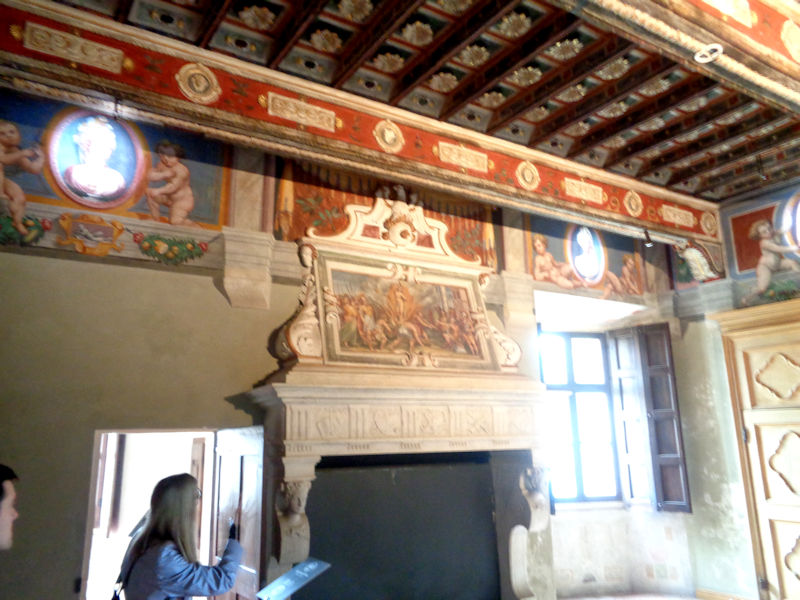
Our guide pointing out the 16th century Mannerist decorations

A ceiling portrait of a fellow (possibly God the Father?) with wings, a hourglass and compass tool, and without his trousers

The Hall of Justice

Fresco cycles in the Hall of Justice. We tourists are being watched closely by the security officer (an off-duty Templar).
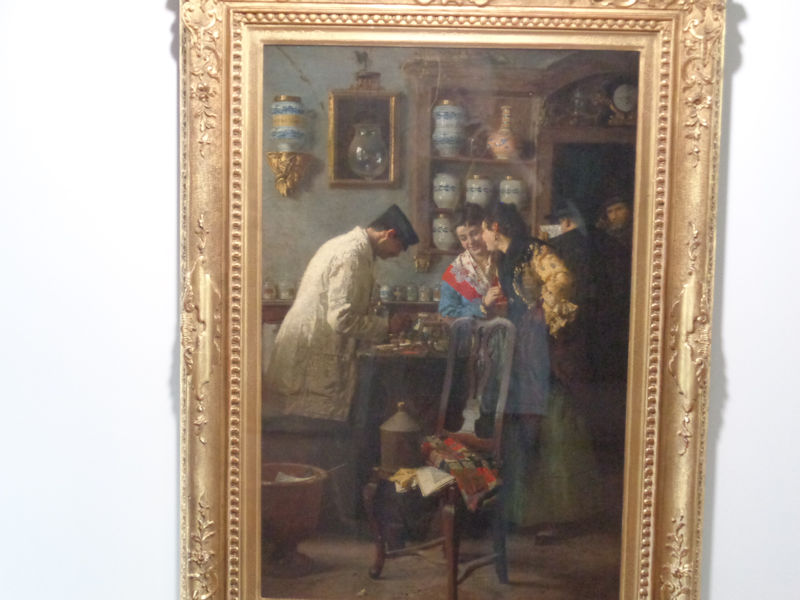
There is a small art gallery in the Ponente castle, and we'll come back for a look when the guided tour ends.

Back across the former inner courtyard, with more Knights Templar possibly having a ciggie break

We're back around the Castello Mezzo, or central castle, and headed for the 'Castello di levante', or eastern castle.

The Castello il levante, where Carlo Emanuele I, the Duke of Savoy, stayed on a visit in 1630. (That's not the half of it. Blessed Amadeus IX 'the Happy', Duke of Savoy, and Yolande of Valois, sister of the French king Louis XI, and their entourage, are said to have found hospitality here in 1469-1471 during the wars over the Piedmont between France and the Marquisate of Saluzzo. Not only that, but the great Savoyard Duke Emmanuel Philibert and his wife Margherita of Valois were guests here in 1560 on their journey from Savona to Vercelli to enter into the newly restored Duchy of Savoy, after which he moved the capital of Savoy from Chambéry to Torino.

More well-meaning locals, in the Hall of Shields (or heraldic scudi), demonstrating a medieval dance for us.

We've finally twigged that these fine medieval embellishers are a social group of re-enacters from town who enjoy enhancing our experience of their castle, for which we can be grateful (even the security officials in chain mail and Templar surcoats).

This ceiling is aesthetically cute but the family heraldic crests, 'consisting of 167 shields divided between the beams of the ceiling and the walls [comprise] the most complete and important collection of ancient blazons survived in the province of Cuneo'.

Including the heraldic crests of northern Italian towns as well
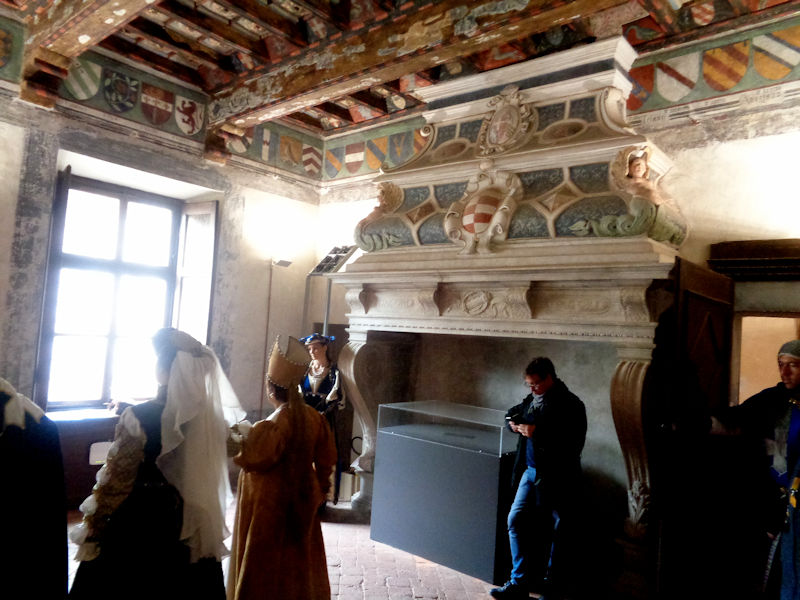
The medieval dancers are finishing up and going off for lunch, so we can get back to ogling the 'grotesques'.
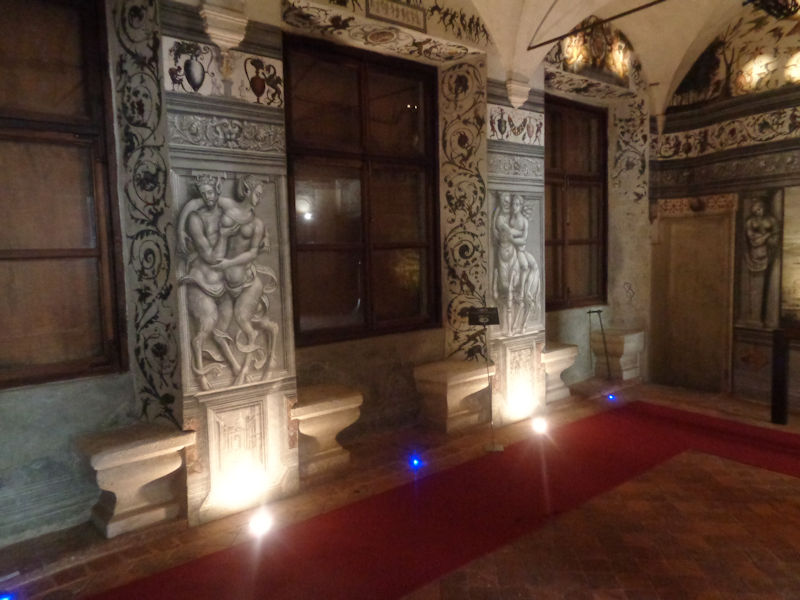
Perhaps, back in the day, these were fun to gaze upon with the hors d'oeuvres and apéritifs.
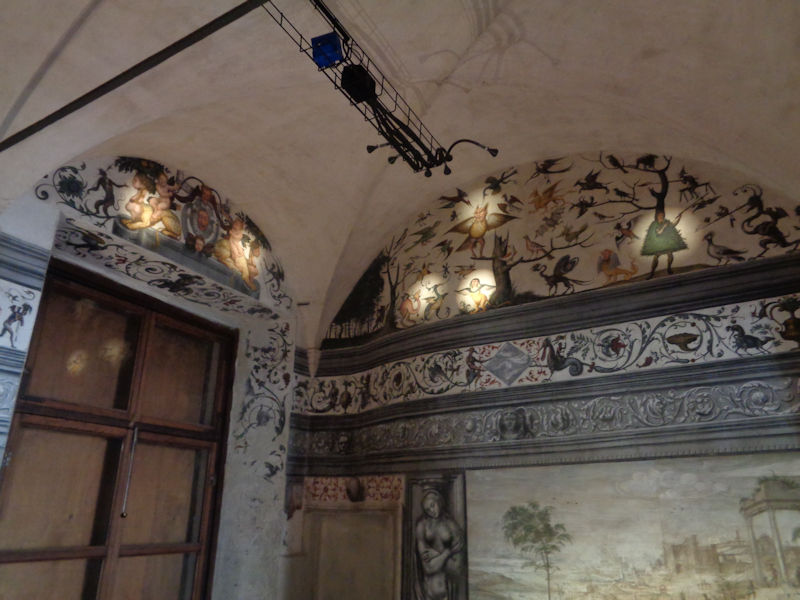
Little grotesques, highlighted

The guided tour is over and we're back to spend some time with the paintings. In the late 19th century, the last descendant of the seignory, Emanuele d'Azeglio Tapparelli, was able to reunite the property from other noble families who'd retained parts of it, and at his death in 1891 the castles and lands were made available to the comune of Lagnasco -- and since 1998 restorations have been ongoing.

This is the permanent contemporary art exhibition Firme da Collezione, which alas doesn't do much for me, but there you are.

A last look at the extended Castello il ponente
Castello Roero di Monticello d'Alba

Monticello d'Alba is a small comune of about 2,000 at the far northeast of the Cuneo province, in the heart of the Roero area bordering on the province of Monferrato, and our destination castle lies here, in Monticello Villa, just a kilometre up the hill from downtown Monticello Borgo. These neighborhoods have grown up around the castle since medieval times, 7km northwest of the city of Alba, and just across the Tanaro river from the Langhe region, though the beautiful hilly countryside is very much the same as that of the Langhe. "Vineyard Landscape of Piedmont: Langhe-Roero and Monferrato" is the name of the UNESCO World Heritage site that embraces the whole region.

The Roero were a medieval family of merchants and bankers who were prominent in the politics of Asti and dominated political and economic life throughout this region for much of the late Middle Ages.
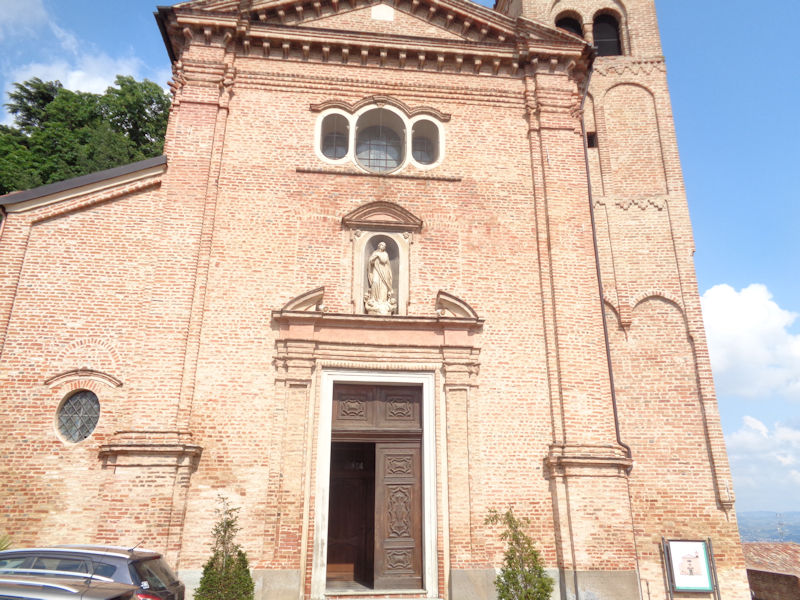
At the moment we're trudging up the approaches to the castle, passing in front of the parochial church of San Ponzio e Immacolata Concezione, originally just a 14th century oratory but rebuilt and enlarged in the mid-17th century.

The Castle of Monticello was first built by the Count/Bishops of Asti to defend the region following the Saracen sacking of Alba in 920. That building was gravely damaged during a three-year siege that ended in 1190 -- the Bishops' vassal in charge of the place had rebelled and had to be taught a lesson by the church and its armed friends from Alba. It was rebuilt when the fief of Monticello was granted to Ludovico Malabaila in 1348, who proved to be a bully and very unsuitable.

Thus, not long afterward, in 1372, the 'Monticellesi' had had enough of the Malabaila and sought help -- the church called upon the Counts Roero (a.k.a. Rotarii), whose militias, after some nasty battles and another siege, drove the Malabaila out and were granted the fiefs of Monticello and Castagnito as a reward, ratified by Pope Gregory XI. The family Roero di Monticello, descended from one of the four brothers who'd answered the church's call to arms, have made the castle here their principal residence since that time. [The Malabaila of Castello Malabaila in Canale 10km to the north, are still a very big name in the Piedmontese wine business.]

The façade, flanked by its large square tower on the left and round one on the right, sports this impressive staircase that replaced the early drawbridge and moat, along with other defensive works, that Percivalle Roero had added when he moved in -- subsequent efforts were made over the years to turn the military stronghold into a pleasant and more modern residence, most especially in 1785 when the then-Count Francesco Gennaro Roero, Viceroy of Sardinia, made substantial revisions for the approval of his new bride.

Our guide has led us around the grounds to this small door on the other side of the square tower, inside of which . . .

. . . we come upon the obligatory collection of medieval weapons and armor.
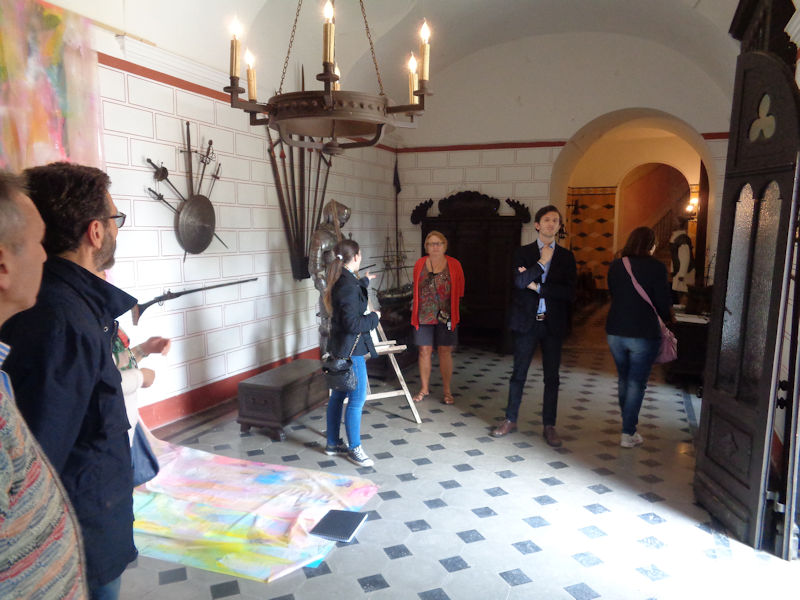
There is also, through the door at the far end, at the foot of the stairs, a small room for viewing a rather tiresome, 'artistic' sort of ten-minute video about something or other to do with the castle.
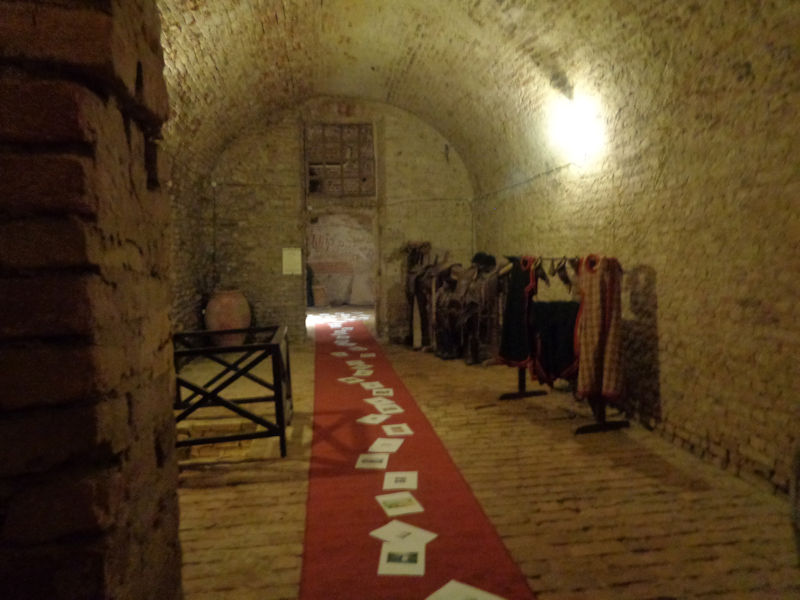
In another artistic exercise, we are following some sheets of paper along a red carpet for some reason.

The medieval-era corridor, which looks more like a wine cellar, leads us into . . .
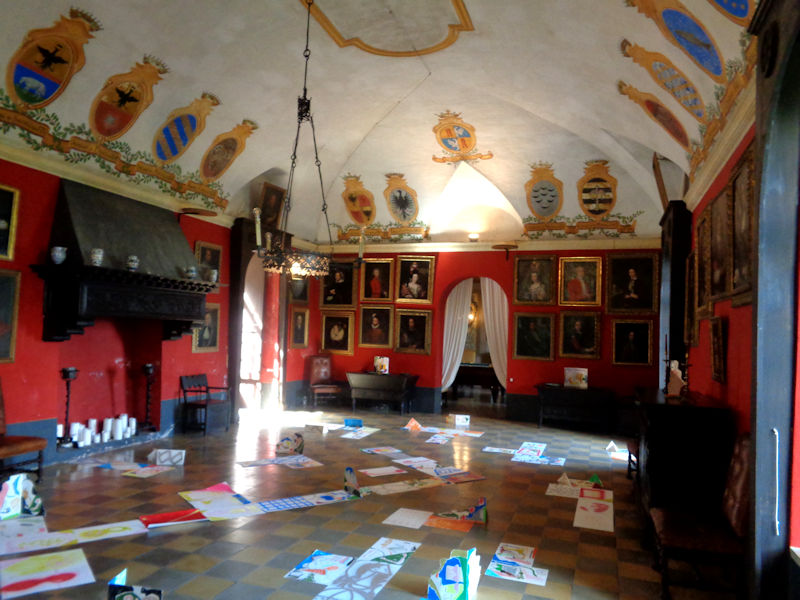
. . . the Sala dei Quadri, or Room of the Paintings, festooned with portraits of Roero family members over many years, "illustrious commanders, crusaders, cardinals, governors and viceroy, demonstrating the greatness of a family which, from the earliest dawn of history, was considered one of the most illustrious and powerful of the original Italian nobility and which, in recognition of its many merits over the centuries, received the investiture of more than ninety feuds [i.e., fiefs]".
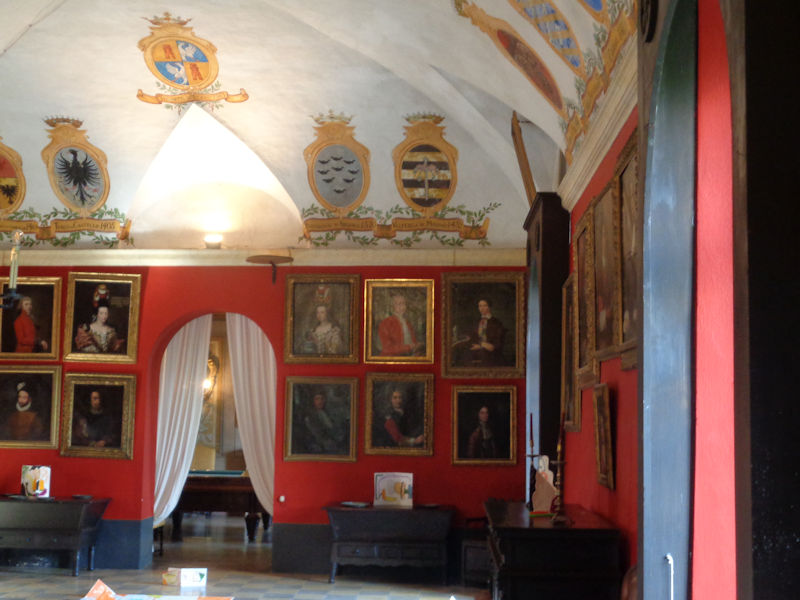
Also included are a few tapestries devoted to the exploits of two of the Roero/Rotario ancestors said to have participated in the Crusades, and around the ceiling there are the heraldic crests apparently of both Roero branches and other families in the region.

The crest of the Roero of Canale features cart wheels that look very like the four wheel emblem of the Carrara lords of Padua
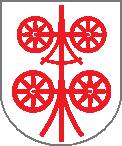
The coat of arms of the Carrara signori of Padua, 1337-1405

The purpose of the artistic paper arrangements on the floor is still not entirely clear.

Other rooms on the first floor embody the eighteenth century ambience of the castle's last major restoration in 1785, with . . .

. . . some of the amusing artistic tastes of the time.

A decorative period room most suitable for smallish, well-coordinated people
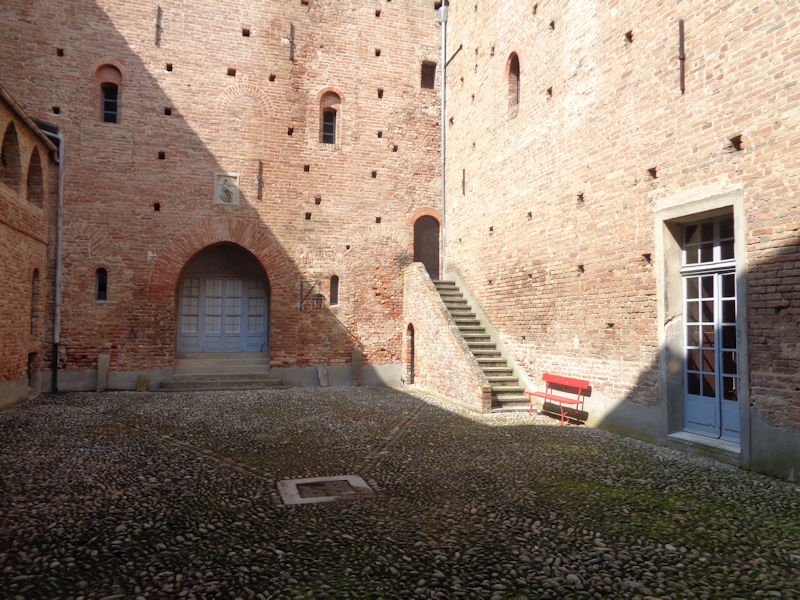
The single central courtyard . . .

. . . which is noted as preserving its original structure from 1300, with its arched windows and its octagonal tower here on the left, leading into a spiral staircase to the upper floors. Off limits to us casual tourists, unfortunately.
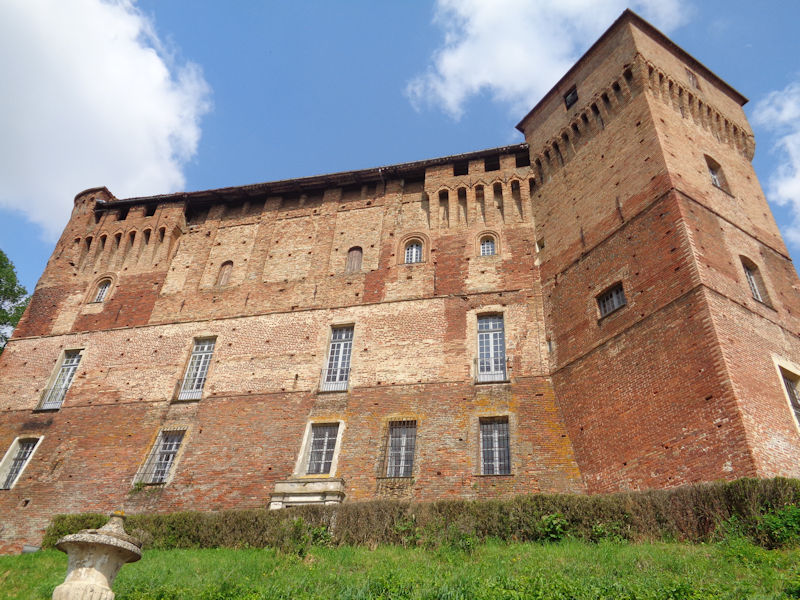
Leaving the Castello Roero down the hillside on its southern flank

A view of lower Monticello from our cute little parked Volvo, next to the St Ponzio church
Castello di Roddi

Roddi is a small hilltop town (ca. 1,600 residents) in the Langhe area of Cuneo province, on the right bank of the river Tanaro just 5.5km southwest of central Alba and about 4.5km north of our tourist flat in Valle Talloria. The name of the village seems to come from a Celtic word for river, meaning the Tanaro.

At the base of the castle, this is the Parrocchia or parish church of Maria Vergine Assunta, completed in 1699.

Just up the hill, we're on a little plateau with the castle complex, the medieval tower and fortress, still undergoing restoration, and adjoining Renaissance residence, newly the home of the cooking school "Terra", inaugurated after recent renovations in 2012 and opened permanently in 2015 -- its mission is to provide opportunities in modern kitchen facilities to learn the basics of local Langhe cuisine, especially everything having to do with the sacred truffles (and most especially, the White Truffles of Alba). The whole castle, when renovations are completed, is slated to become a museum of the Langhe cuisine and wines.

Our guided tour doesn't begin for a while, so we have time to have a coffee in the little bar, and learn from the barista about the "Truffle Dog University", right here, where since 1880 dogs have been trained to search for truffles (the use of pigs, we're told, was phased out in the 1950s).

The looming medieval keep of the Castello di Roddi

There was a fortification on this spot in the 11th century, but the present medieval building was built in the late 14th century, probably by the family of the Falletti of Barolo, owners of several other castles in the Langhe, some of which we've already visited in the past few days. The property passed in 1526 to the Counts of Mirandola, specifically to Francesco Pico della Mirandola from Mantua, a relative of the famous Renaissance philosopher.
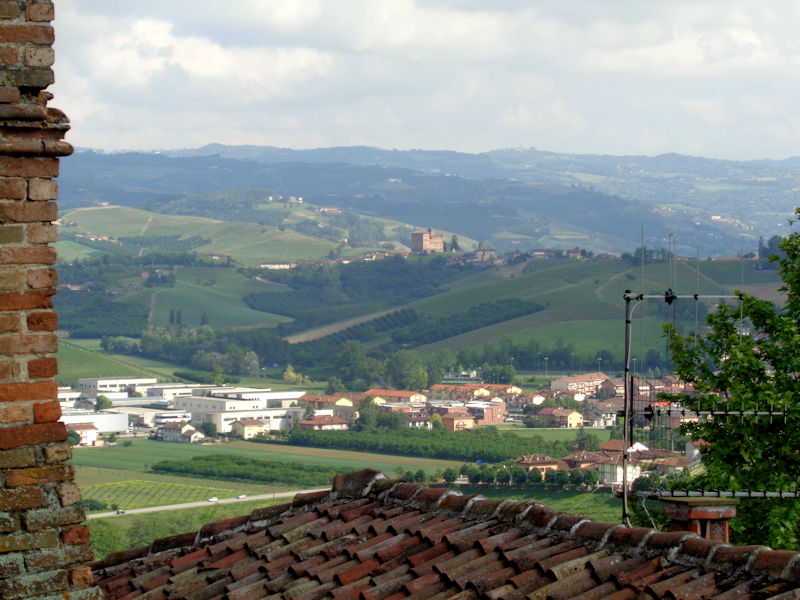
A view from the open courtyard of the countryside to the south, including the Castello di Grinzane Cavour 3 or 4 km off. There is now no trace of the moat and drawbridge that would once have limited access to the old castle, and presently access is gained through the door in the open courtyard in the photo just above.

Kristin outside the Renaissance wing and ticket office, waiting for our guided tour to get underway
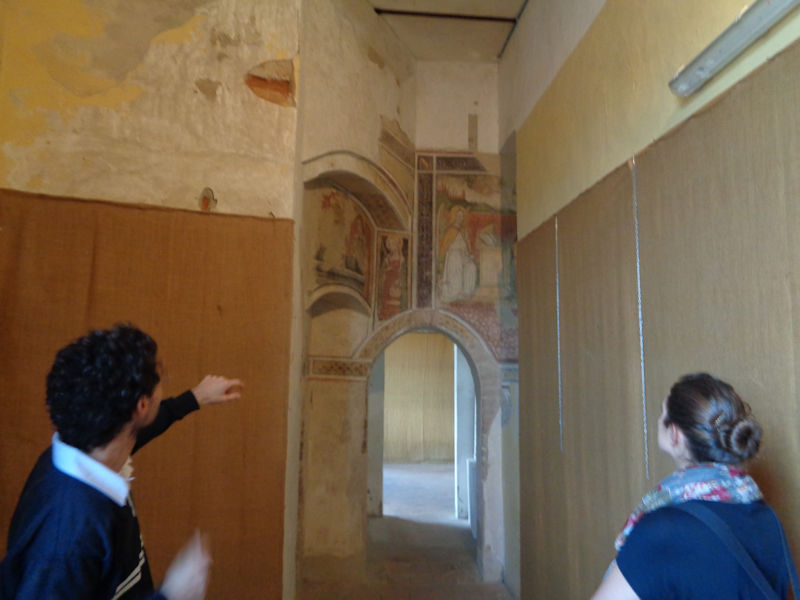
Our guide is pointing out some of the medieval frescoes and the rather rough joining of the Renaissance era residence with the older fortification.

Despite the surprisingly good structural condition of the older parts of the castle, there are actually very few frescoes or other decorations still to be seen.

At the top of the three stories of the castle, the old battlements are roofed over.

Substantial areas of the older building are still awaiting their restoration.
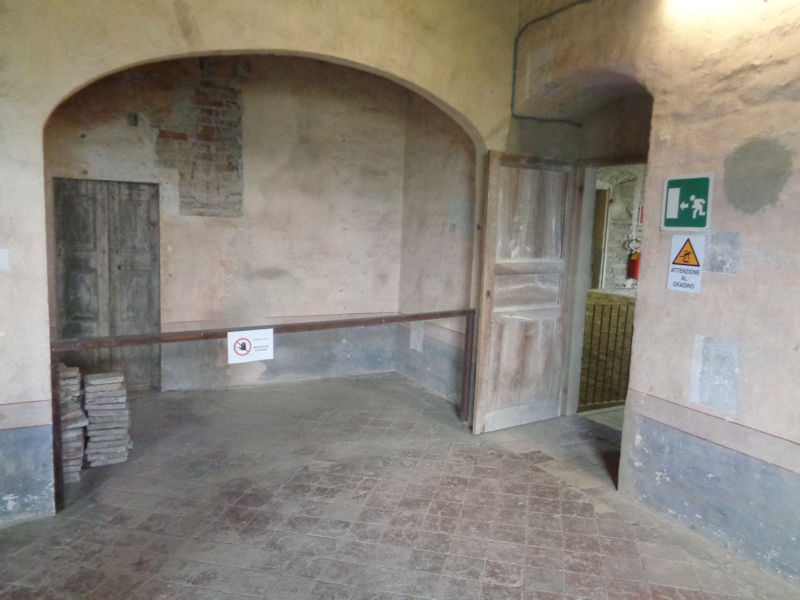
One source says that after 1690 the property was taken over by the church, whilst another says that the Della Chiesa family of Saluzzo owned it until the early 19th century. And one source says that the 1815 Congress of Vienna, readjusting European territorial claims after the fall of Napoleon's French empire, permitted the Savoy family to take over here, whilst another says that Charles Albert of Savoy, the King of Sardinia, bought the place in 1836 but didn't look after it. In any case, in 2001 it became the property of the Roddi municipality.

At least none of the sources claims that Il Duce was ever resident here.


The large Renaissance era kitchens are prized and will be carefully renovated . . . soon.
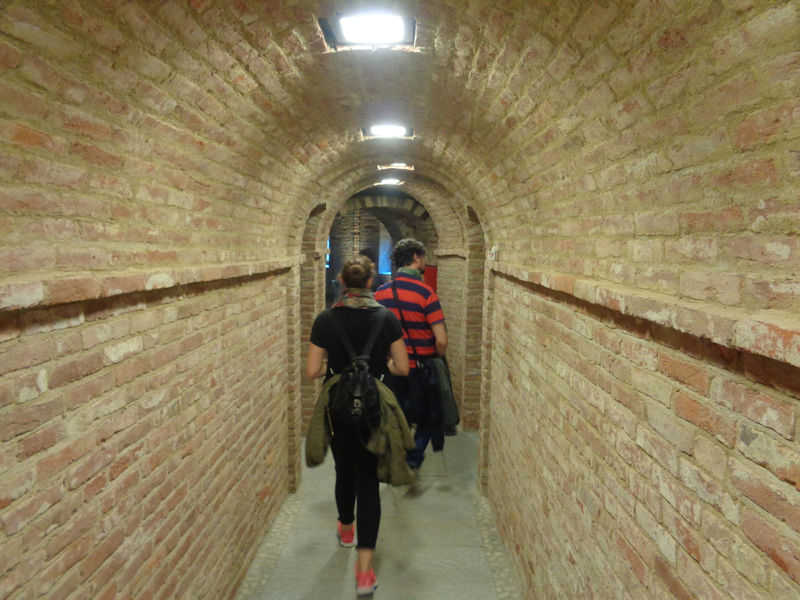
Over into the Renaissance addition to the old castle

This is a mini-museum to Giacomo Morra (1889-1963), the 'godfather of gourmet truffles', a shopkeeper who founded Alba's first truffle fair in 1929, now famous as the International Alba White Truffle Fair, and the man who made the White Truffle, the tartufo bianco, 'the world’s most coveted culinary prize'.
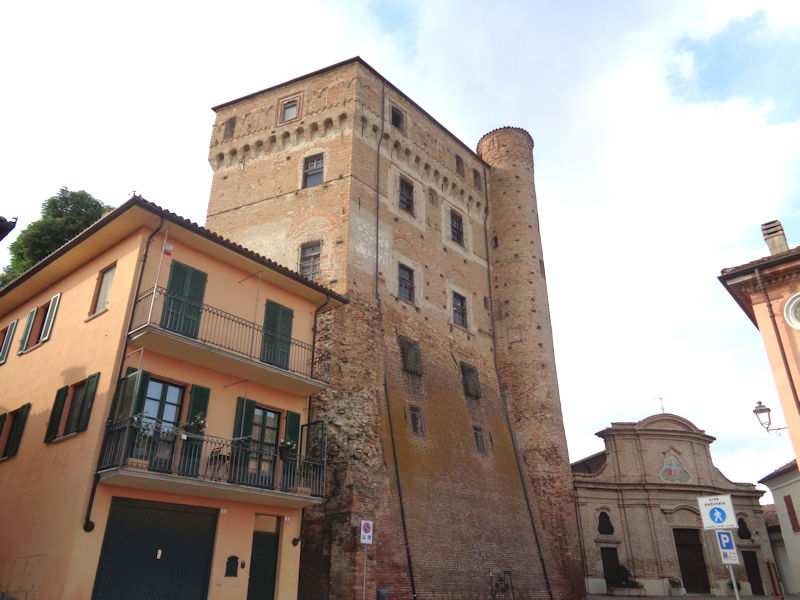
Down the hill below the castle

Next: Views of Fossano

 Dwight Peck's personal website
Dwight Peck's personal website



































































